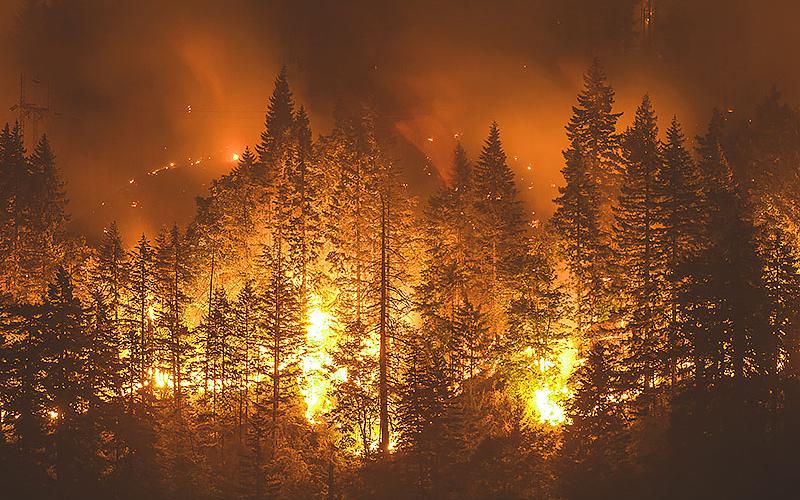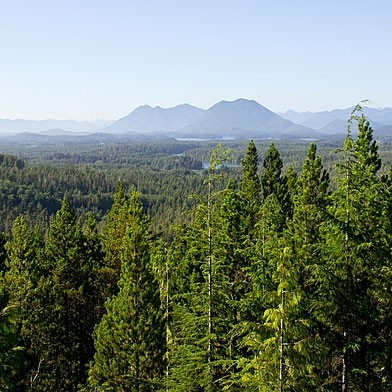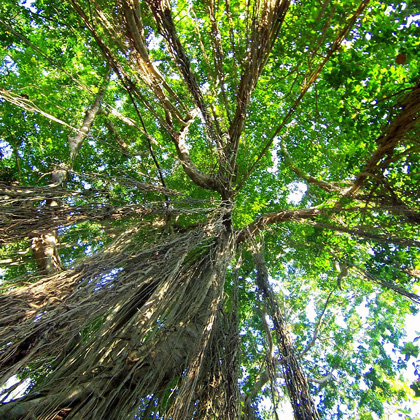Does climate change cause extreme wildfires? New techniques analyze human impacts on fire risks.

Does climate change cause extreme wildfires? New techniques analyze human impacts on fire risks.
As large wildfires threaten communities in many parts of the world, understanding how climate change will influence extreme fire events can help predict future fire risk. In a recent study, researchers used new models to find that human emissions increased fire risk by 1.5 to 6 times in western Canada.
Kirchmeier-Young, Megan C., Francis W. Zwiers, Nathan P. Gillett, and Alex J. Cannon. “Attributing Extreme Fire Risk in Western Canada to Human Emissions.” Climatic Change 144, no. 2 (September 01 2017): 365-79. DOI: 10.1007/s10584-017-2030-0.
Last year was one of raging wildfires. Throughout 2017 communities in the southeastern U.S., the U.S. Northwest, and Canada were threatened by fast-moving blazes. While it is not possible to say definitively that a single event occurred because of climate change, new attribution studies reveal how human emissions are changing the probability of a natural disaster occurring.
Extreme event attribution is a process that compares the probability of an event occurring in a world influenced by human emissions with the probability of the event occurring in a world with no human influence. By comparing these two probabilities, scientists can understand how much more likely it is that the event will occur with climate change.
In western Canada, where large fires frequently threaten local communities, extreme event attribution can help predict how fire risk will change into the future. Wildfires in Canada burn about 2.1 million hectares annually. In May 2016, a fire near Fort McMurray burned almost 600,000 hectares, displacing over 80,000 people, and causing $3.5 billion in insured losses. The massive impact of this fire drove scientists to examine the effects of climate change on fire risk in this region.
In a study published in Climatic Change, led by Megan Kirchmeier-Young at the University of Victoria, researchers used an extreme event attribution framework to quantify the influence of anthropogenic forcings — or human emissions — on extreme fire risk in western Canada. The researchers used 14 metrics to describe extreme fire risk. Each was based on either the Fire Weather Index (FWI) System or the Fire Behavior Prediction (FBP) System. FWI uses inputs of temperature, relative humidity, wind speed, and precipitation to create summary measures of fire potential; FBP uses the FWI information to evaluate the behavior of an ignited fire based on different fuel types. For each of these 14 conditions, the researchers compared a scenario with no human influence to a scenario based on observed human emissions.
The event attribution analysis revealed that anthropogenic forcings make extreme fire risk events 1.5 to 6 times more likely than a scenario with only natural forcings. This means human impacts result in longer fire seasons, which have higher-intensity fires, and more potential for a fire to spread quickly.
The 2016 Fort McMurray fire occurred in a world where earlier and longer fire seasons are more likely, and there is an increased risk of extreme fires — now and in the future. Understanding the impacts of human emissions can help us move forward in reducing emissions and adapting our communities for future natural disasters.




